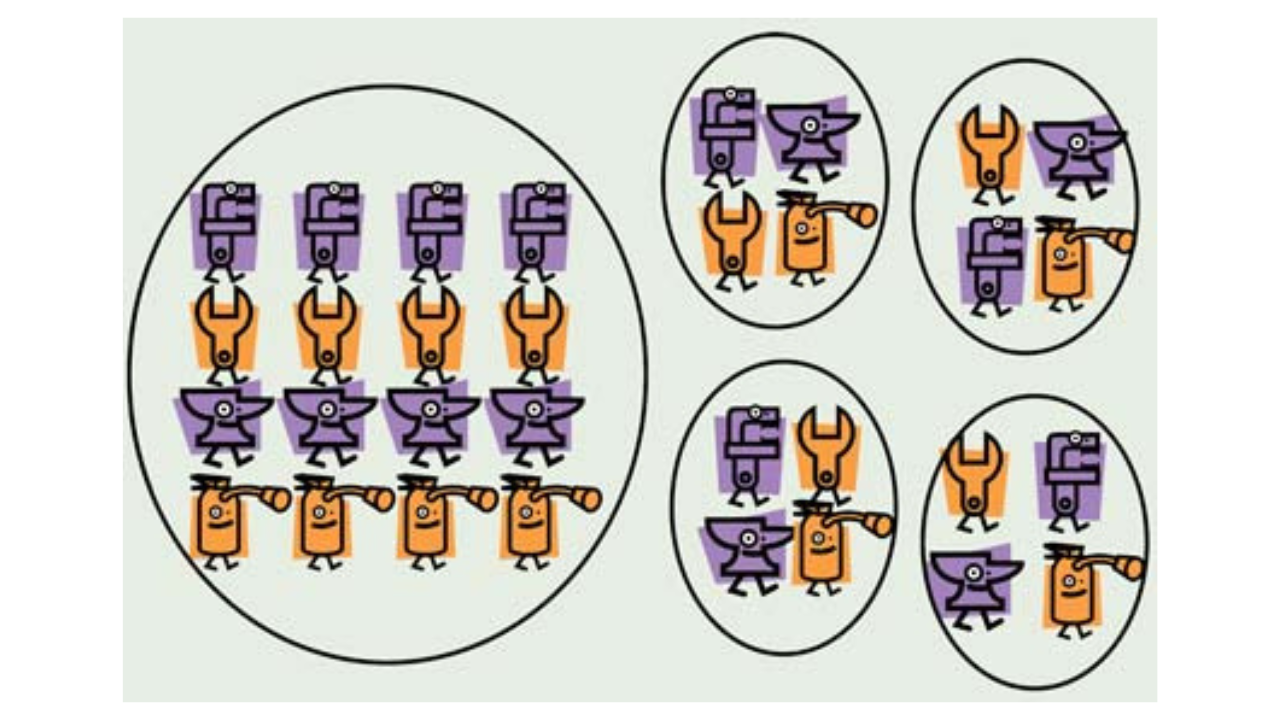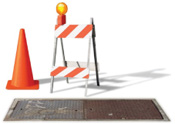The Pitfalls of Planning and Scheduling
Alan Warmack
Why do so organizations struggle to achieve success in this area?
World-class organizations would not—could not—succeed without implementing an efficient and effective planning and scheduling process. It’s one of those cornerstone processes that can transform your organization into “Best-in-Class.” Here are some of the pitfalls of planning and scheduling regarding the deployment of Planners/Schedulers that can keep you from getting where you want to be.
13 Common Pitfalls of Planning and Scheduling
#1: Picking the wrong person as Planner
The Planner position is one of the most critical in the entire maintenance organization. Placing the right person in this position with the right skills is paramount to the success of the group. The Planner is responsible for uplifting the utilization rate of the entire group. How can this be accomplished with the wrong person? Your very finest should be considered for this position. He or she should have a host of capabilities that management should understand before the choice is made.
#2: Inadequately training Planners
Once you’ve selected the best individuals, with the proper qualities and capabilities for the Planner position, they still have much to learn. They need to know how to use the CMMS properly. They need to know how to process work requests and plan them to the proper state. They need to know how to extract data from the CMMS and generate reports. They need to understand the kitting and staging process. They need to know how to type—it shouldn’t take all day to insert one job plan into the system.
Give your personnel the ability to do their jobs well. The bottom line? Train, train, train!
Give your Planners the type of training that makes them both efficient and effective in their job. Remember, they, in turn, are key to making the maintenance business unit effective and efficient, and increasing the crew’s utilization. They must be trained to an administrator’s level, short of security, if they are to be successful. For example, in some plants, Planners can’t even write work orders! Give your personnel the ability to do their jobs well to avoid these pitfalls of planning and scheduling. The bottom line? Train, train, train!
#3: Using Planners as relief personnel
One of the biggest mistakes in industry today is that Planners really aren’t just planners. Instead, they may be Planners/Supervisors/ Parts Expeditors/etc., etc., etc. Understand that a Planner cannot—and should not—be considered as a relief position of any kind, or be tasked with multiple job responsibilities. Granted, these are hard times for industry and everyone is doing more with less. If, however, a Planner is doing all of the things he/she should be doing, this individual will not have the time to be multi-tasking for other positions.
 #4: Using Planners for emergency or unscheduled work
#4: Using Planners for emergency or unscheduled work
Just as Planners should not be used for relief, they should not be counted on for emergency or unscheduled work. Many companies allow their Planners to be manipulated into handling “fire-fighting.” Who better to help in an emergency? They know the parts and the tools, and can put something together quickly to help get us running! Be careful of this trap. There is an opportunity to train the proper personnel on how to be both effective and efficient in handling emergency work—but your Planners shouldn’t be doing it. As long as you keep them pulled into your reactive world, instead of letting them prepare future work that will be done more efficiently and effectively, you will never get out of a reactive state. Avoid this pitfalls in planning and scheduling if you ever want to get out of the endless cycle of reactive work.
#5: Planning work from a desk
Another trap awaiting the Planners is their sense of “knowing it all.” “I know this job. I used to work on this machine myself. I know just what it will take to make this repair. I can plan this job right here at my desk!” ALWAYS VISIT THE JOB SITE! There will always be things going on at the machine that the Planner may not remember or be aware of and, consequently, would not be able to plan for—a safety issue … an access situation … whatever. Things change and people sometimes forget. Therefore, it is important to remember that planning is NOT a desk job!
#6: Improperly allocating resources and material
In the sequence in which they are needed…
This is one of the Planner’s most crucial tasks (and one of the harder ones). The common theme for good planning and scheduling is efficiency and effectiveness. How many times do you see technicians standing around waiting for someone else to finish a task before they can start their assigned job tasks? For example, electricians are unwiring a machine while mechanics stand around waiting. Job sequencing must be an integral part of a Planner’s job plan to help drive out waste.
To allow essential work to be performed in the shortest time at the least cost…
Do your Planners prepare jobs so that the maintenance teams don’t have to stop for anything—and, thus, hit your utilization rate? Planners should live to take all of these hits away and reduce/eliminate wasted time. As a result, your people will now be working on the right things, at the right time, with the right tools, materials, and everything needed to do the job correctly the first time without delay.
#7: Providing poor job instructions
How many times have you seen work orders with instructions like “it broke” or “not running”? Planners must ensure that mechanics have enough information to do the job without having to stop for additional information. What’s “enough”? Planners should provide a degree of information so that a new mechanic has the same chance of successfully performing the work as a seasoned mechanic. The new-hire needs the detail; the more experienced person should at least use the information as a checklist. Remember this rule: If everything is prepared properly, maintenance personnel should not have to search for anything. This includes information.
 #8: Not providing feedback
#8: Not providing feedback
Once the work is complete, proper feedback must be documented to state the work that was done. The Planner should have prepared the work, providing estimated tasks to be performed—like the time the job should take, special tools and materials required, etc. Post-job feedback will document what it actually took to do the job, thus helping the Planner learn and prepare for future work. As long as you allow your technicians to simply state “complete,” you are missing a huge opportunity to help the Planner become more effective. You also are cluttering your equipment history with poor data. If you allow requestors to say, “It broke” and mechanics to merely say, “I fixed it,” you have poor data going into your system. Under these circumstances, you can’t determine opportunities for improvement and identify the bad actors, this is a huge and very common pitfall of planning and scheduling, record the data and make sure it’s detailed!
#9: Not kitting and staging
Simply put, planning is work preparation. Planners should prepare everything needed to allow the job to be completed—without the mechanics having to stop and go get ANYTHING. Part of this “planning package” is parts and materials. As Planners develop a job’s bill of materials, the pick list should be processed by the storeroom attendant. However, having given the list to the clerk doesn’t mean the Planner is finished. Once the kit is put together, it must be checked for accuracy. Is it what was requested? Planners are not parts attendants. Once kitted, identify where the kit will be staged. Is the staging area secured? Are procedures in place to ensure that only authorized personnel can enter the staging area and remove kits? If a Planner makes the mistake of setting up an unsecured staging area, kits will be cannibalized by everyone—even your own people. Secure your staging area!
If everything is prepared properly, maintenance personnel should not have to search for anything. This includes information.
Remember, too, that inadequate coordination of materials can result in false starts, delays, or makeshift repairs. Planners should not put jobs in as “ready for schedule” without having all materials and parts in their possession. Nor should they rely on vendor delivery promises—that is a major trap to avoid.
#10: Asking mechanics for feedback and not making the changes
The importance of good feedback has already been established. A common trap for Planners is related to feedback on PM work orders. It goes like this: The Planner talks with the mechanics and convinces them of the need to provide good feedback on work orders when completing their paperwork. More specifically, they convince them to make edits, deletions and additions to the tasks on the PMs as they perform them in order to make them more effective in the future. However, when the mechanic gets the PM back to perform next time, the Planner hasn’t made the suggested changes. It was not easy to convince the mechanics to help the first time—how hard do you think it will be to try and convince them the second time?
 #11: Not gaining cooperation and coordination with operations partners
#11: Not gaining cooperation and coordination with operations partners
A Planner can build the very best job plans and then put a great looking schedule together to get the work accomplished. But if this work is performed in a maintenance department vacuum, it will not be successful. The Planner must build the needed partnerships with operations or he/she will continue to struggle and possibly fail.
Planners should remember that their managers do not have all day to read a 10-page written report.
Poor timing also is an issue. It can lead to equipment isolation and shutdown, resulting in excessive downtime. When a Planner is wearing his/her Scheduler’s hat, everything possible must be done to communicate with your partners in operations so as to develop a schedule to which everyone agrees. Failure to do this will result in mechanics showing up for a job where the machine is not ready to be taken down. In turn, your mechanics’ utilization rate is again being drastically reduced.
#12: Poor backlog management
Keep it clean…
Planners must keep the backlog of “ready-to-go” work clean to stay efficient and prevent mistakes. Don’t allow a backlog of open work orders to contain work that has already been done on a breakdown. The work was completed, but the paperwork was not turned in, etc. Allowing these unneeded work orders to clutter your backlog will cause many issues when trying to look for the right work to be done during the scheduling process.
Proper format…
Despite being kept clean, backlog reports can still cause pain if they are not formatted for easy review. Planners should always group work by equipment, then sort by priority. Sorting by priority first can lead to trouble—you will be looking at a high priority job at the top of the report and miss lower-priority jobs on the same equipment. Had they been seen, those lower-priority items could possibly have been scheduled in conjunction with the high-priority repair in order to minimize the machine going down multiple times.
#13: Metrics
Not too many…
You can measure yourself to death! Metrics should be used to analyze your current state and assist in finding opportunities for improvement. Too many metrics only “muddy the waters.” Be careful to pick those that guide your decision-making process on how to properly run your business unit.
Easily understood…
Planners should remember that their managers do not have all day to read a 10-page written report. Information should be put in graphic format. (Important Note: there are good graphs and “ugly” graphs.) A manager should be able to look at the information and understand it in 20 seconds or less.
Staying on the road to success
Avoiding the pitfalls of planning and scheduling will greatly improve the effectiveness and efficiency of your planning and scheduling process. This translates into an environment of well-maintained machines that produce optimum levels of high-quality product in a safe manner. Ultimately, this is what allows an organization to be more competitive in the global marketplace.
Alan Warmack
Related Articles

A Planner's Tool Kit

Uptime: Fill Out Work Orders? Who's Got Time for Paperwork?

Tips for Maintenance Planning

Centralized Maintenance vs. Decentralized

You Cannot Maximize Production or Reduce Costs Without the use of an Effective Planned Maintenance System

Work Order Prioritization


 #4: Using Planners for emergency or unscheduled work
#4: Using Planners for emergency or unscheduled work  #8: Not providing feedback
#8: Not providing feedback #11: Not gaining cooperation and coordination with operations partners
#11: Not gaining cooperation and coordination with operations partners

